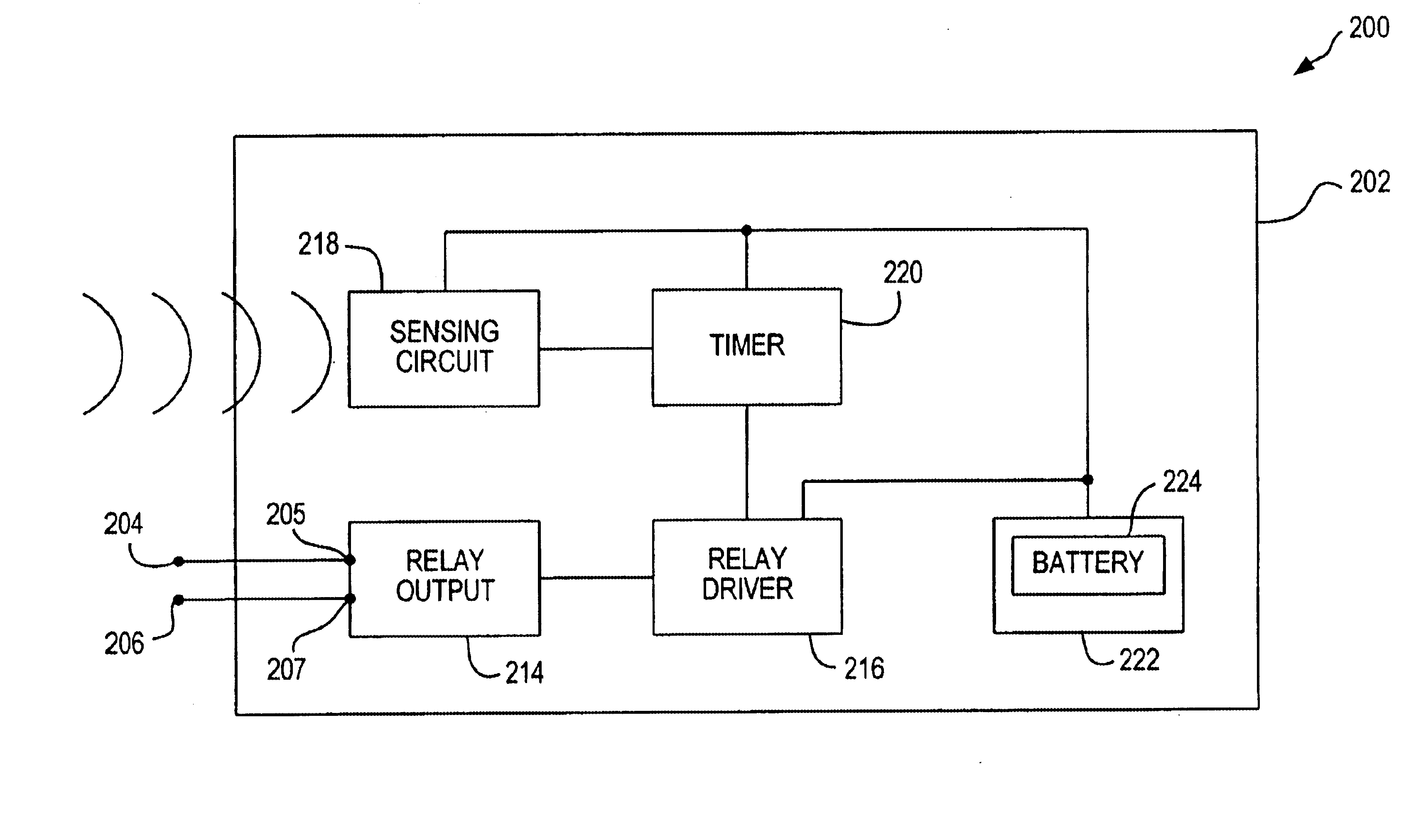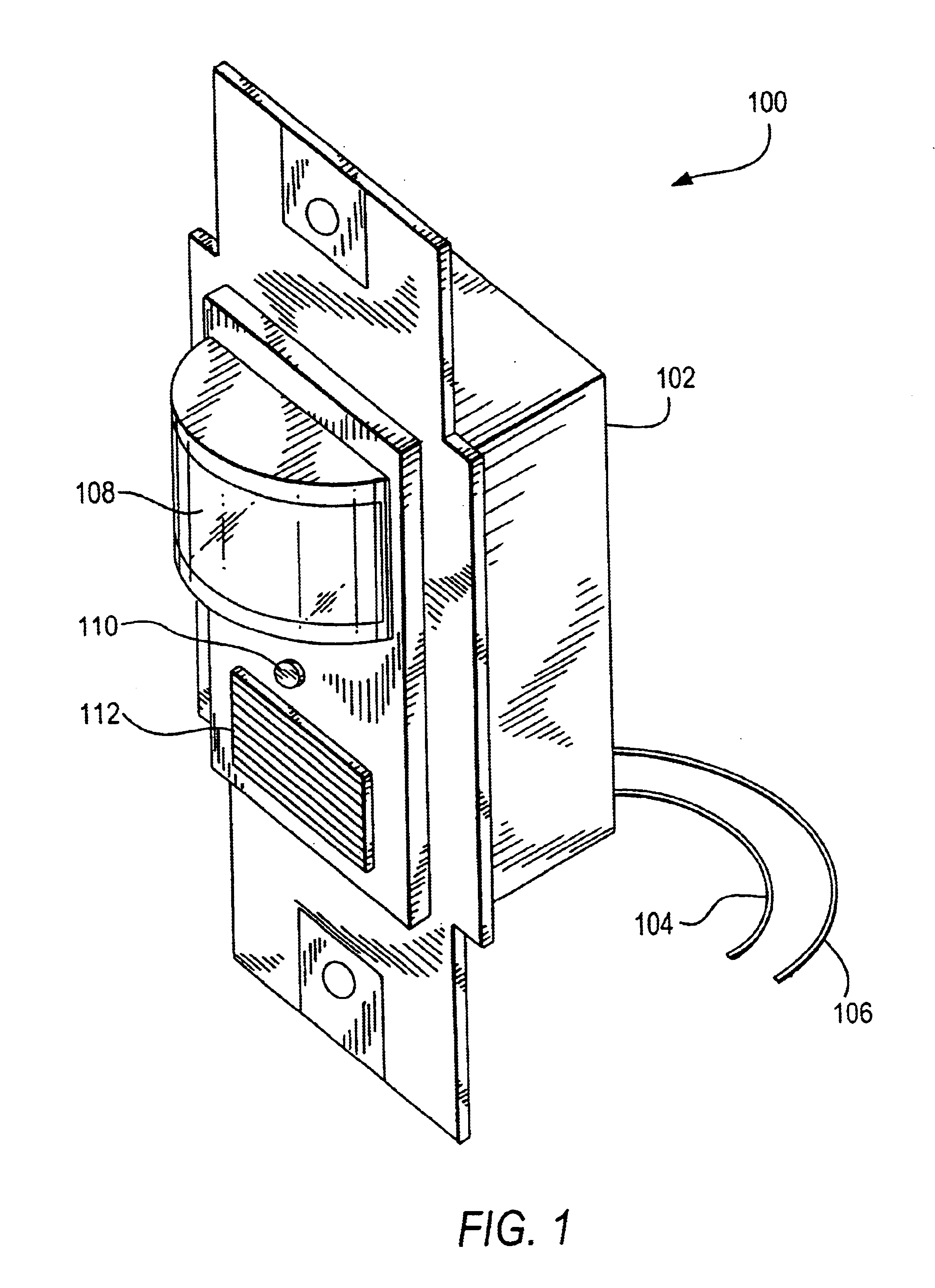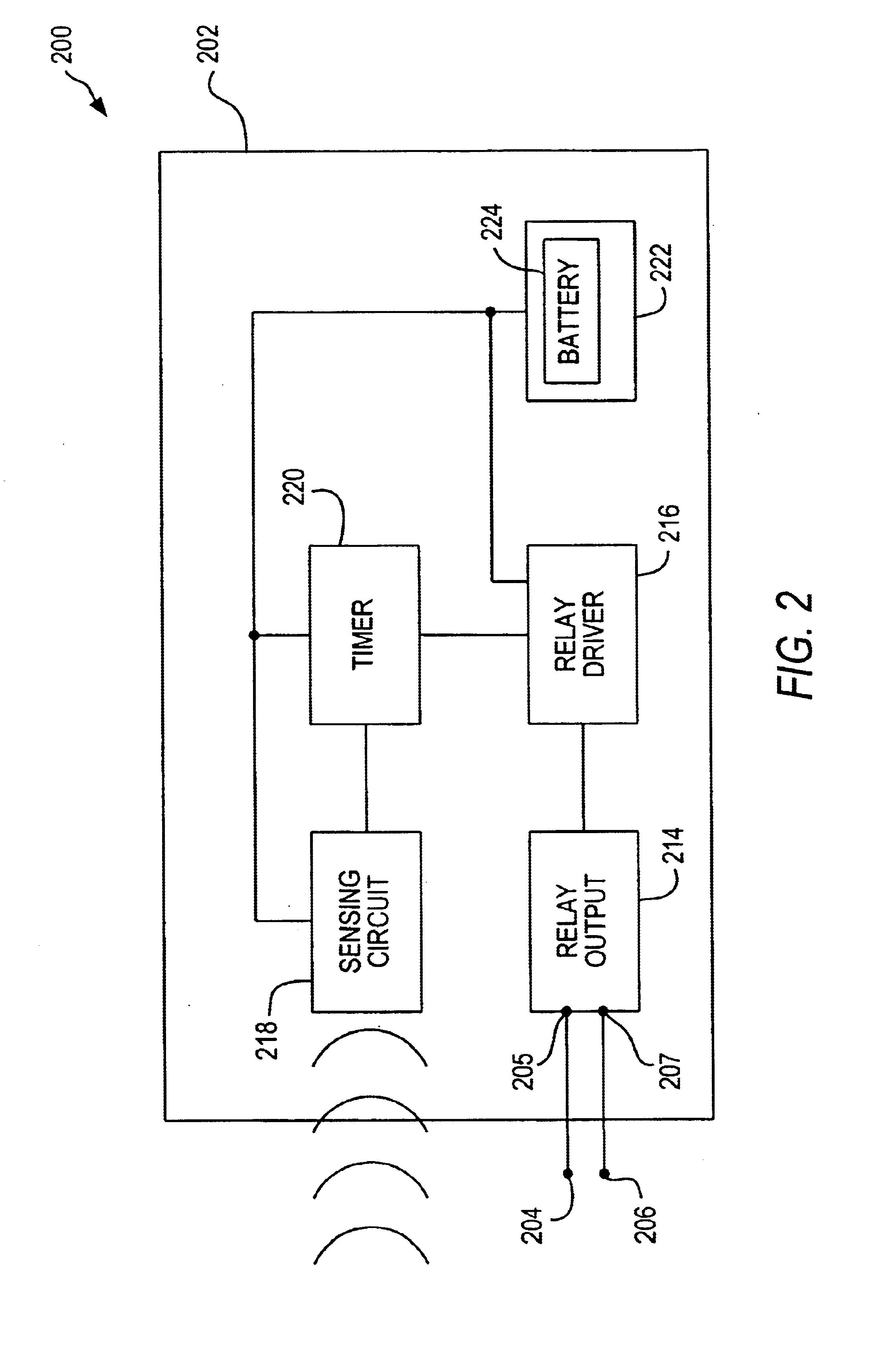Self-powered long-life occupancy sensors and sensor circuits
a technology of occupancy sensors and self-powered long-life, applied in the field of occupancy sensors, can solve the problems of not being able to operate, not being able to be used in the area, and many known sensors only being able to operate at 120 volts ac, and achieve the effect of convenient installation
- Summary
- Abstract
- Description
- Claims
- Application Information
AI Technical Summary
Benefits of technology
Problems solved by technology
Method used
Image
Examples
Embodiment Construction
The invention provides a self-powered occupancy sensor that has a very long operating life of preferably about 20 years or more. The self-powered sensor includes a relay output that does not rely on voltage from an installation site. The relay output can switch large currents (with little generated heat) as well as very low currents such as those in signaling circuits. Thus, the self-powered sensor can be advantageously installed world wide regardless of local voltages and wiring. The sensor also can be advantageously used with many different types of devices and equipment including, for example, energy management systems (even open collector), solar powered devices, and other battery-operated equipment. Moreover, the sensor can be installed in remote areas with no available power for use with, for example, wireless devices and transmitters.
The self-powered occupancy sensor is enclosed in a housing having preferably only two external electrical conductors connected internally to the...
PUM
 Login to View More
Login to View More Abstract
Description
Claims
Application Information
 Login to View More
Login to View More - R&D
- Intellectual Property
- Life Sciences
- Materials
- Tech Scout
- Unparalleled Data Quality
- Higher Quality Content
- 60% Fewer Hallucinations
Browse by: Latest US Patents, China's latest patents, Technical Efficacy Thesaurus, Application Domain, Technology Topic, Popular Technical Reports.
© 2025 PatSnap. All rights reserved.Legal|Privacy policy|Modern Slavery Act Transparency Statement|Sitemap|About US| Contact US: help@patsnap.com



